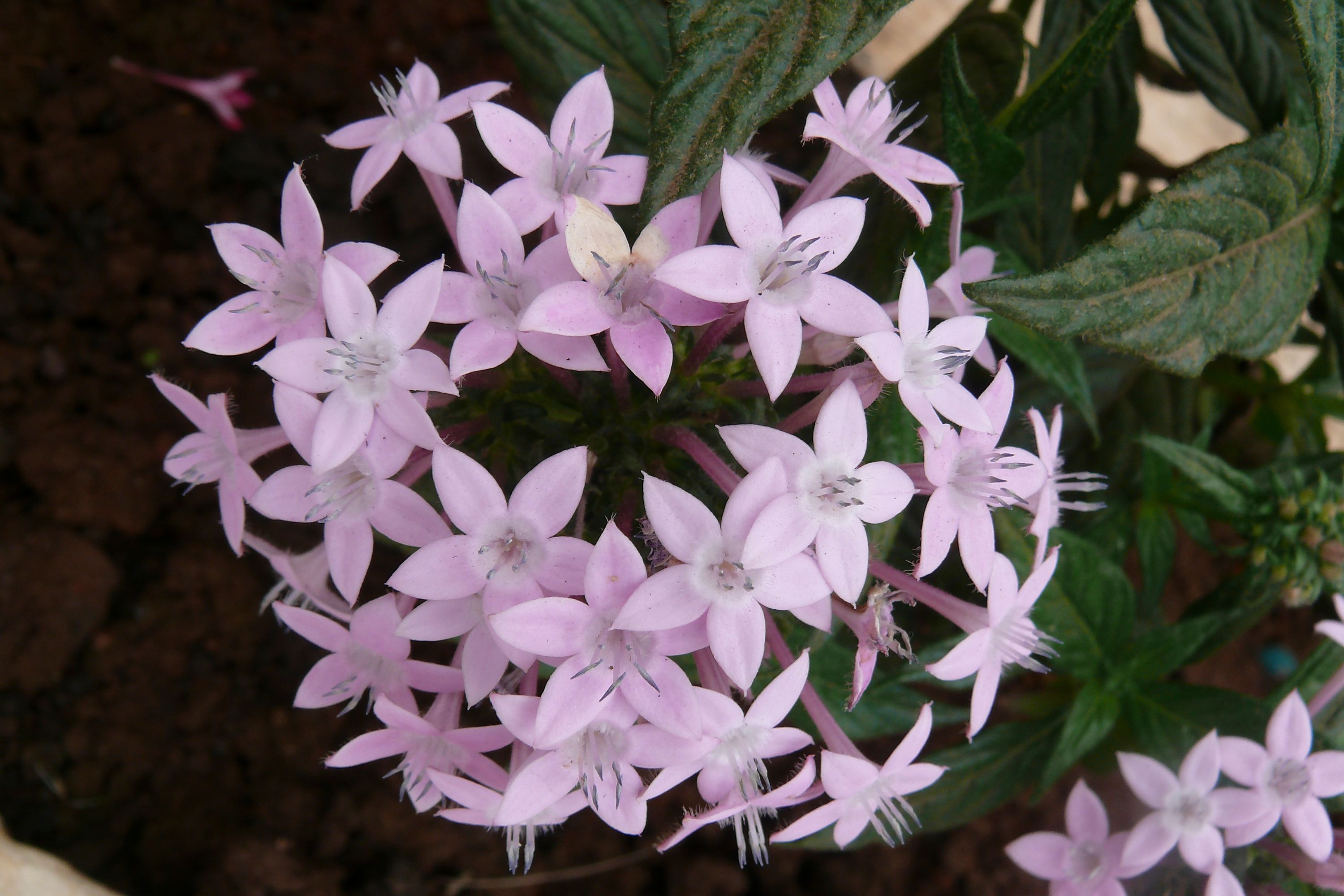Egyptian starcluster
(Pentas lanceolata)

Description
Pentas lanceolata, commonly known as star cluster or Egyptian star cluster, is a tropical perennial plant that is native to East Africa. It belongs to the family Rubiaceae and is widely grown as an ornamental plant in tropical and subtropical regions around the world. Pentas lanceolata is popular for its attractive clusters of star-shaped flowers that bloom in shades of red, pink, lavender, and white, making it an excellent addition to gardens, landscapes, and containers. This article will provide a comprehensive overview of Pentas lanceolata, covering its botany, cultivation, and uses. Botanical Description: Pentas lanceolata is a bushy, evergreen shrub that can grow up to 3 feet tall and wide. Its stem is erect, square-shaped, and green to reddish-brown in color, while its leaves are lanceolate, glossy, and arranged in whorls of four or five. The leaves are typically 2-4 inches long and 0.5-1 inch wide, with a smooth texture and a dark green color. The plant produces clusters of small, star-shaped flowers that are 1-2 inches in diameter and bloom on long, slender stems. The flowers can be red, pink, lavender, or white, and they are rich in nectar, making them attractive to butterflies, bees, and other pollinators. Cultivation: Pentas lanceolata is a tropical plant that requires warm temperatures, bright light, and well-draining soil to thrive. It can be grown as an annual or a perennial, depending on the climate and growing conditions. In colder regions, Pentas lanceolata is typically grown as an annual, while in warmer regions, it can be grown as a perennial. The plant is hardy in USDA zones 10-11 and can be grown as a houseplant in colder regions. Soil: Pentas lanceolata prefers well-draining, fertile soil that is rich in organic matter. The pH of the soil should be between 6.0-7.5, which is slightly acidic to neutral. The soil should also be moist but not waterlogged, as Pentas lanceolata is sensitive to overwatering and root rot. Light: Pentas lanceolata requires bright, direct sunlight for at least 6 hours a day to thrive. It can tolerate some shade but will not flower as well in low light conditions. In hotter regions, the plant may benefit from some afternoon shade to prevent the leaves from burning. Watering: Pentas lanceolata requires regular watering to keep the soil moist but not waterlogged. It is important to avoid overwatering, as this can lead to root rot and other problems. The plant may need more frequent watering during hot, dry weather, but it is important to allow the soil to dry out slightly between waterings. Fertilization: Pentas lanceolata benefits from regular fertilization with a balanced, slow-release fertilizer. The plant should be fertilized every 2-3 weeks during the growing season, which is typically spring and summer. It is important to follow the manufacturer's instructions when applying fertilizer and to avoid overfertilization, as this can lead to leaf burn and other problems. Propagation: Pentas lanceolata can be propagated from stem cuttings or by division. Stem cuttings should be taken in late spring or early summer and should be 4-6 inches long with several leaves. The cuttings should be dipped in rooting hormone and planted in a well-draining potting mix. Division can be done in the spring by carefully digging up the plant and dividing the roots into several smaller plants. Uses: Pentas lanceolata has several uses, including: Ornamental: Pentas lanceolata is primarily grown as an ornamental plant due to its attractive clusters of star-shaped flowers that bloom in shades of red, pink, lavender, and white. It is widely grown in gardens, landscapes, and containers as a perennial or an annual. Pollinator plant: The flowers of Pentas lanceolata are rich in nectar and attract butterflies, bees, and other pollinators, making it a great addition to pollinator gardens. Medicinal: In traditional African medicine, Pentas lanceolata has been used to treat a variety of ailments, including fever, headaches, and stomach disorders. Modern research has shown that the plant contains compounds with antioxidant, anti-inflammatory, and antimicrobial properties, which may have potential medicinal uses. Dyeing: The roots of Pentas lanceolata contain red and yellow dyes that have been used to dye textiles and other materials. Culinary: The leaves of Pentas lanceolata are edible and can be used as a flavoring agent in soups and stews. However, they are not commonly used for culinary purposes.
Taxonomic tree:







